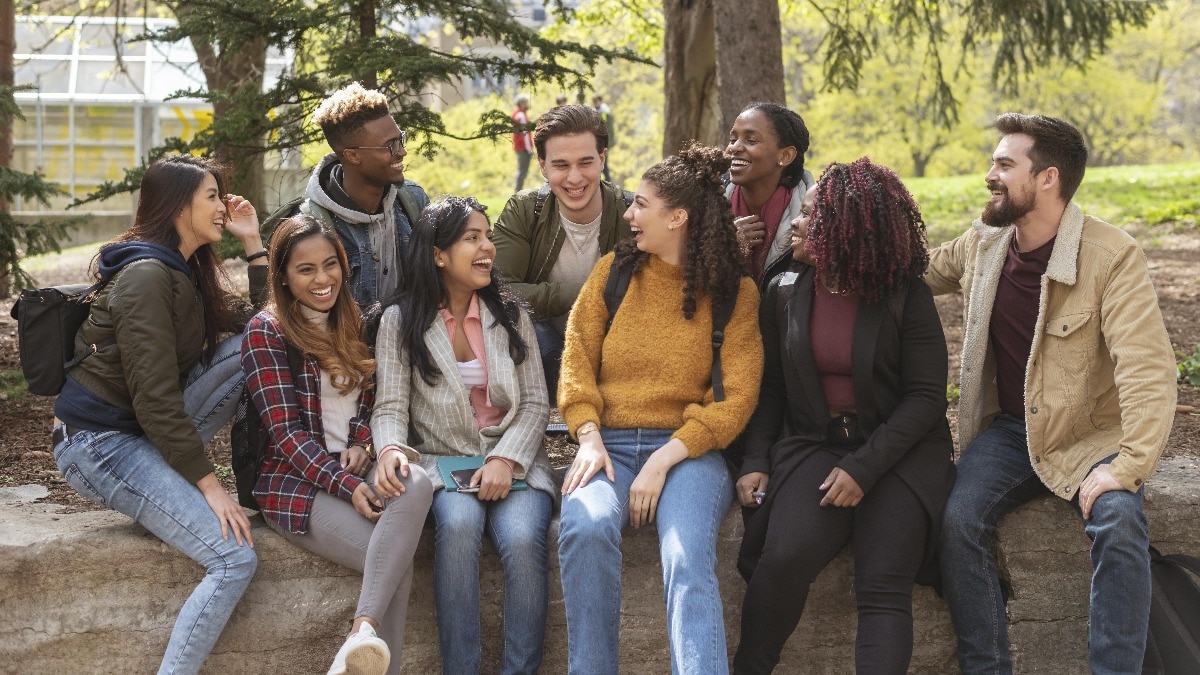2024-04-25 14:53:03
Recent years have witnessed a surge in enrolment by Indian students at Canadian universities, according to a study by the National Foundation for American Policy (NFAP). The report highlights a remarkable increase in the number of Indian students opting for Canada over the United States for higher education.
Indian enrolment at Canadian universities rose more than 5,800% in the last two decades, according to the NFAP. The number of Indian students in the US, in comparison, grew by just 45% between 2000 and 2021.
The NFAP is a non-profit policy think tank.
The NFAP study says that after finishing studies, international students in Canada can become permanent residents in a few years.
But in the US, there are limits on employment-based green cards, meaning educated people from India might wait decades for permanent residency.
The Trump administration made getting H-1B status harder and talked about adding new restrictions or removing Optional Practical Training for students, which might have discouraged international students from going to US universities, according to NFAP.
In January, Canada announced a two-year cap for international students, which was later expanded.
For the first time, starting in September, Canada will limit the number of ‘temporary residents’ it will admit.
This includes temporary foreign workers, those admitted under humanitarian and asylum programmes.
Before this, only annual targets were set for permanent residents.
Additionally, there might be a short-term impact on Indian student applications due to diplomatic issues between India and Canada.
“Canada is benefiting from a diversion of young Indian tech workers from US destinations, largely because of the challenges of obtaining and renewing H-1B visas and finding a reliable route to US permanent residence,” said Peter Rekal, founder of the Toronto-based immigration law firm Rekai LLP.
PATHWAY TO PERMANENT RESIDENCY
The research underscores the attractiveness of Canada’s immigration policies for international students. Graduates in Canada have the opportunity to gain permanent residency within a few years after graduation, unlike the US, where the process can entail long waiting periods, according to NFAP.
The number of Indians moving to Canada has gone up a lot since 2013. Between 2013 and 2023, the number rose from 32,828 to 139,715, a 326% increase. This increase was fuelled by more Indian students going to Canadian universities.
The number of international students at Canadian universities went up from 62,223 in 2000 to 400,521 in 2021, a 544% increase. International students have been really important for Canadian universities. Since 2000, 45% of the growth in enrolment at Canadian universities is because of international students.
The increase in Indian students has played a big role in the rise of international students coming to Canada. Over the last two decades, the number of Indian students at Canadian universities went up by over 5,000%.
Specifically, Indian enrolment went from 2,181 in 2000 to 128,928 in 2021, an increase of 126,747 or 5,811%. This increase accounts for 37% of the overall rise in international students at Canadian universities from 2000 to 2021. However, there might be fewer visas issued to Indian students in the short term due to a diplomatic issue.
Over the same period, the number of international students in the US also went up, but at a slower rate compared to Canada. Between 2000 and 2021, the number of international students in US universities increased from 526,809 to 763,760, a rise of 236,951 or 45%. This is less than the over 500% increase seen in international students at Canadian universities during the same time.
In January 2015, Canada started the Express Entry program, which gives preference to skilled professionals who have studied in Canada or worked there temporarily. Then, in June 2017, Canada launched its Global Skills Strategy to attract top foreign talent and encourage foreign investment by making it easier for companies to set up offices in Canada.
Before the pandemic, especially during the Trump administration, Canada was much more appealing to Indian students than the US. Between 2016 and 2019, the number of Indian students in US universities dropped by 13%, while in Canadian universities, it went up by 182%.
LONG WAITS FOR PERMANENT RESIDENCY
Highly skilled Indians often face long waits for employment-based immigrant visas, sometimes lasting decades. More than 1.2 million Indians, including their families, are waiting in line for these visas, as the annual limit of 140,000 green cards and the per-country limit have led to these lengthy waits. These limits have not changed since 1990.
The pandemic affected enrolment numbers in the US, but Indian student numbers might have bounced back somewhat. In 2021, there were around 130,994 Indian students, similar to the 129,135 in 2016. In 2022, Indian student enrolment (excluding OPT) was 199,861, likely due to lower enrollment during the pandemic. The average enrolment for Indian students during the fall from 2020 to 2022 was 141,612, which was 29,661 or 26% higher than in fall 2019.
Indian graduate students at US universities saw a decline of 28% in computer science and 35% in engineering between 2016-17 and 2019-20.
In 2020, Indian graduate students in engineering and computer science continued to decline. In 2022, Indian student graduate-level enrolment in engineering was 33,820, lower than the 39,470 in 2016 but much higher than the levels in 2019 (25,470) and 2020 (18,390).
Indian enrolment at Canadian universities went up a lot from 2,181 in 2000 to 128,928 in 2021, a big increase of 126,747 or 5,811%. This rise in Indian students makes up 37% of the total increase in international students at Canadian universities from 2000 to 2021, according to NFAP.
nfap, nfap indian student, nfap report today, indian students in canada, indian students in canada news, indian students in canada 2024, indian students in us, indian students in usa, indian students in us news, National Foundation for American Policy immigration
Source link
![]()
